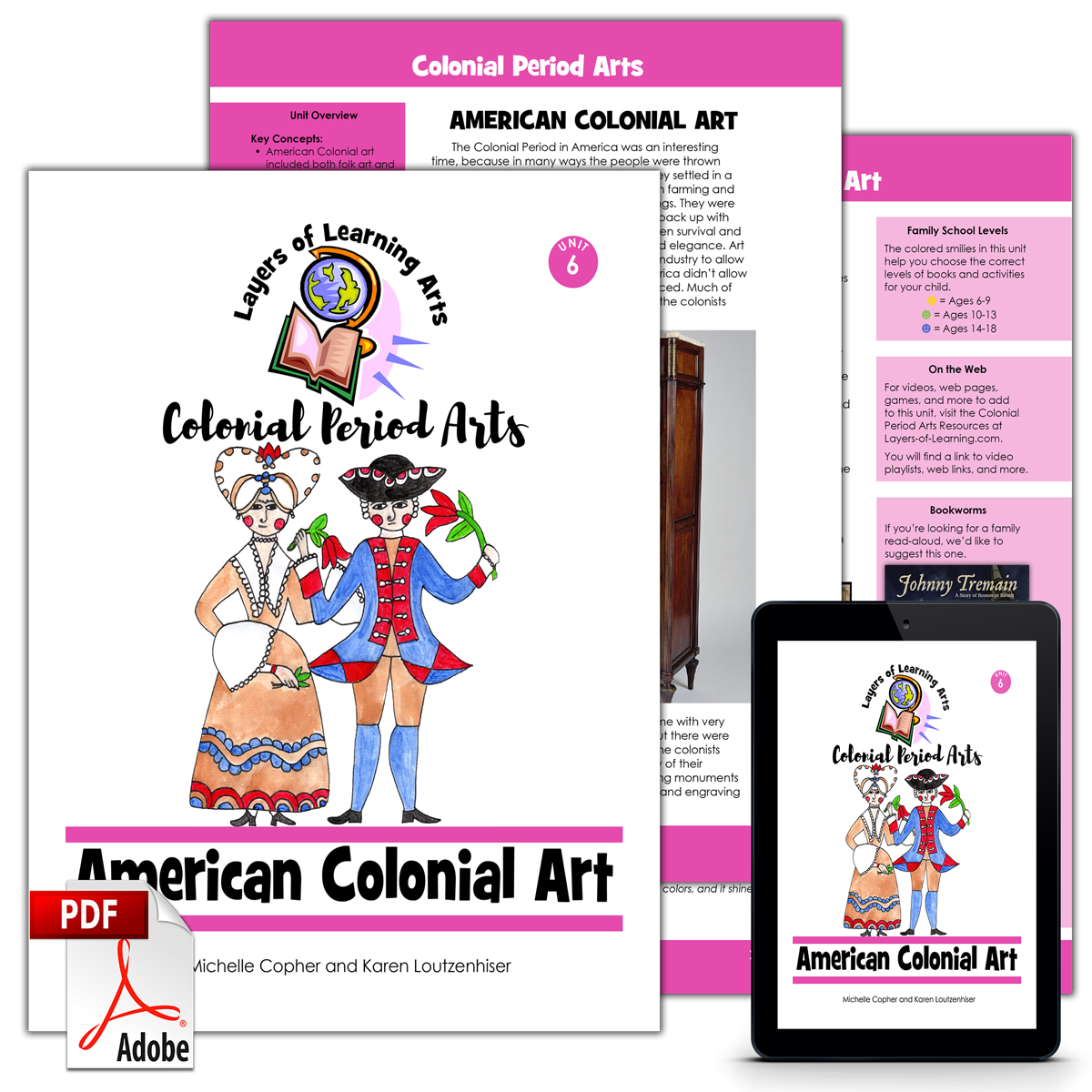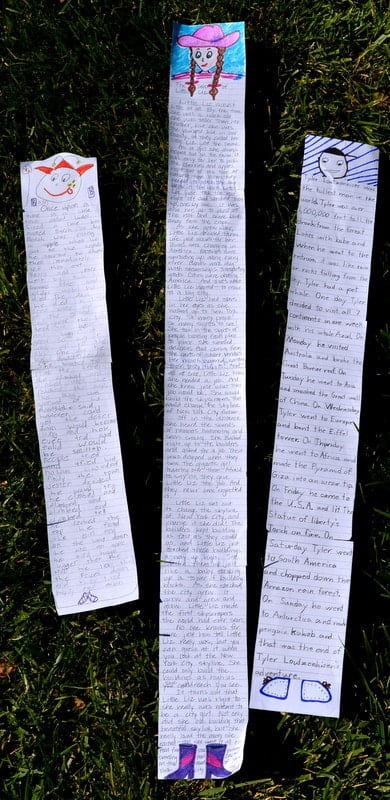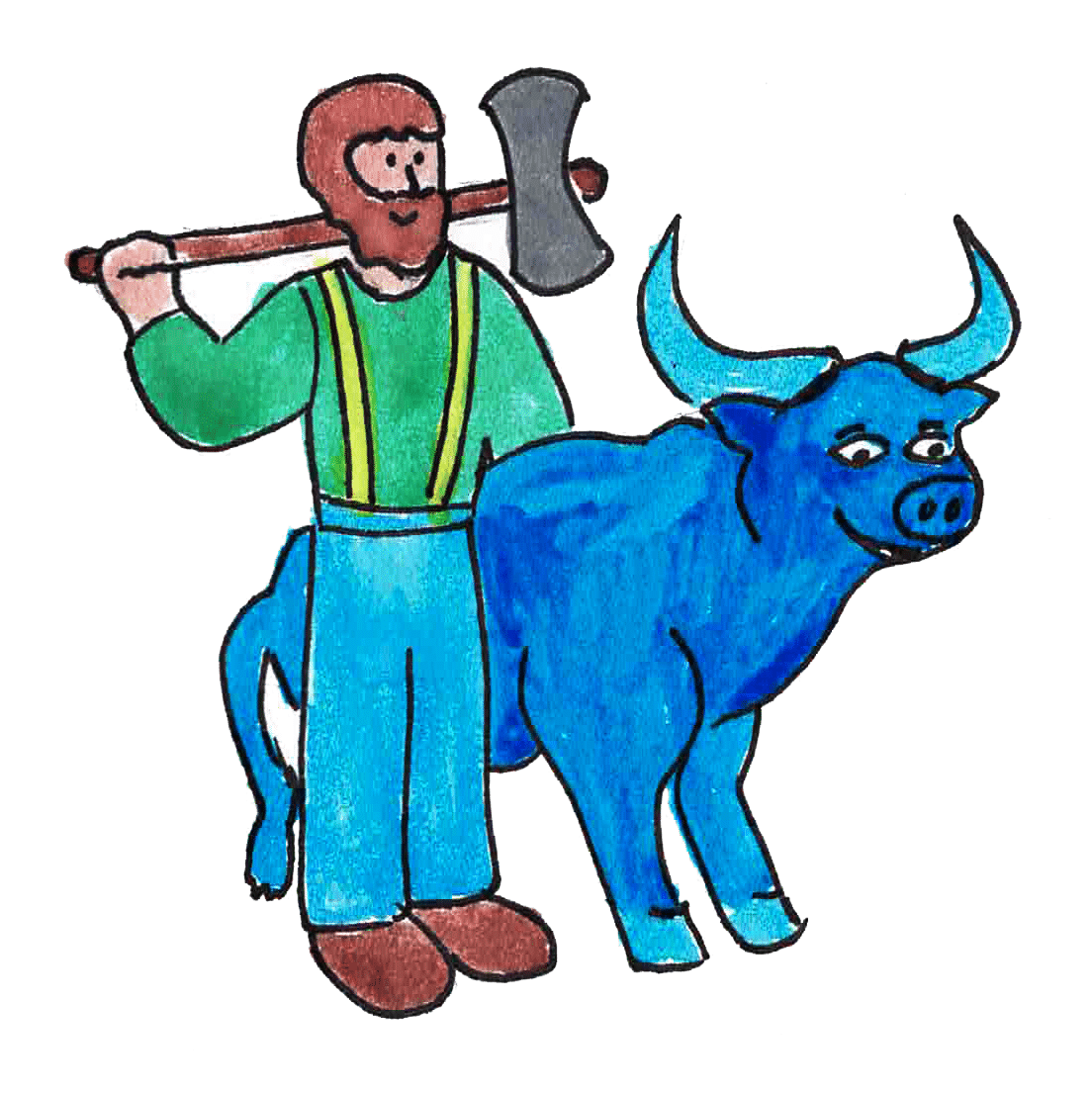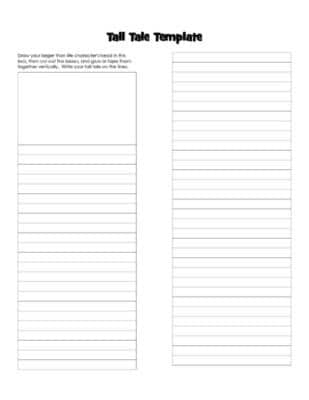This exploration is for all ages, as the colored smilies show. You can read and learn about tall tales with your whole family together!




The Literal Tall Tales Exploration is an art exploration from American Colonial Art about tall tales. Layers of Learning has hands-on explorations, experiments, and printables in every unit of this family-friendly curriculum. Learn more about Layers of Learning.
Tall tales have been around for centuries, but they really became popular in the early 1800s in America. They are sometimes called lying tales because they are so exaggerated and larger than life. Much of the country hadn’t been settled yet at the time, and the land seemed wild and untamed. Frontiersmen sat around campfires at night and told tales of the great heroes that traversed the wild lands. The tales grew bigger and more exaggerated with each telling until they were completely unbelievable (and completely fun to hear!)
Step 1: Library Research
Before you begin exploring, read a book or two about tall tales. Here are some suggestions, but if you can’t find these, look for books at your library. The colored smilies above each book tell you what age level they’re recommended for.
As Amazon affiliates, the recommended books and products below kick back a tiny percentage of your purchase to us. It doesn’t affect your cost and it helps us run our website. We thank you!

Paul Bunyan
by Steven Kellogg

Step 2: Literal Tall Tales
To make your own literal tall tale, you need a pair a scissors, tape, writing utensils, and the tall tale template.
After you’ve read some, try your hand at writing your own tall tale. Begin by thinking of a character who has some special qualities and abilities. Now think of an everyday event or task, like going grocery shopping or playing a game of soccer.
If you’re having trouble you can start with a simple sentence starter like these:

My dad is so big, ________________.
I am such an awesome swimmer that______________.
My walk to school is so long, _________________.
The wind was blowing so hard that ________________.
One day it was so cold that __________________.
When you complete each sentence in a bigger-than-life way you will have a great start to your tall tale. Think of at least three unbelievable things your character can do in your everyday story and add those in. Next, use lots of adjectives to describe the action. You can say a pothole was big, or you can use lots of adjectives and description to say the pothole was so enormous that it could fit 300 elephants inside! Impossible exaggerations are what make up a tall tale, so use LOTS of them! End your tall tale with one final unbelievable event. Make it your biggest exaggeration of all.
Use the printable template to write your story on. You can print out extras is you’ve written a really long whopper, and then just tape the extra columns for an extra tall tale. Draw your character’s head at the top and feet at the bottom, so the tale is making up the body. Write out the entire tale going down the page.
Step 3: Show What You Know
As a family, share your tall tales out loud and cheer each other on. Whose tall tale character is the biggest, toughest, strongest, smartest, or most amazing?
Additional Layers
Additional Layers are extra activities you can do or tangents you can take off on. You will find them in the sidebars of each Layers of Learning unit. They are optional, so just choose what interests you.
Writer’s Workshop
Draw a character sketch of a classic tall tale character. Your character should be either really big, really strong, really talented, or really amazing in some other way. Surround your character with some of his or her amazing characteristics.
Additional Layer
Label a blank map of the United States with the location of each tall tale you read. Many of the characters travel, so you can trace their paths along the map to show where the characters went. For example, in his tall tale Paul Bunyan carved out the Grand Canyon, created Mt. Hood, and accomplished other amazing feats across the map.
Deep Thoughts
Choose a character from one of the tall tales you read. Now imagine that character is your parent. What is the best part about having the character for your mom or dad? The worst? How do you think people would treat you differently? What traits would you want to inherit from the character?
Get a Free Unit
Choose between the first unit in each Layers of Learning subject to try for free when you sign up for the newsletter.
We never spam and you can cancel your subscription at any time.








Awesome ideas. I love tall tales.
Very interesting. I am going to subscribe to your blog for more ideas.
Great ideas we are waldorf homeschooling and 2nd grade is tall tales. We will defiantly try writing a literally “tall tale”
These are great ideas!